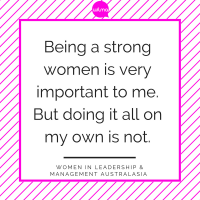The march of women into the senior ranks of the NSW public service has stalled. New targets, KPIs and strong leadership are needed, commissioner Graeme Head has been advised.
Women at senior executive level in the New South Wales public service outperform their male counterparts, according to a new report on how to renew the push for gender equity in the upper echelons of the state government.
In the Advancing Women report, University of Sydney employment relations professor Marian Baird and private sector researchers Justine Eversson and Sarah Oxenbridge provide seven recommendations to the NSW Public Service Commission, which commissioned the study, along with practical suggestions for initiatives that would serve to implement them.
Women make up 32% of senior executives in the NSW public service but the figure has not moved much in the past five years and is unlikely to get much higher without “strategic interventions”, according to the researchers, who add:
“There is also no guarantee that the rates of women currently in senior positions in the NSW public sector will be sustained without active attention to the issue.”
The report also points out that those women who are in senior roles actually have stronger skills in most areas than the men, based on analysis of senior executive capability from earlier this year:
“The average scores of 91 female participants exceeded the average scores of 204 male participants in all capabilities except for Think and Solve Problems,Finance, and Project Management.
“Women statistically significantly outperform men on 11 of the 17 capabilities, whereas men statistically significantly outperform women in only one category, that of Finance. The results of the analysis confirm that women have the capability to work at senior levels, but that some development in relation to finance capability may be useful for women seeking to progress further in senior roles.”
The researchers advise setting specific targets for the number of women in senior roles in workforce plans, and key performance indicators for gender equity to be established, for the whole public service as well as for clusters and individual agencies, taking into account differences in operating environments.
Public service commissioner Graeme Head should take the lead and “endorse, champion and facilitate” new gender equity initiatives, while secretaries and agency heads should sort out the governance and responsibility issues, and get cracking.
More flexible working arrangements and greater awareness about those that already exist for senior public servants would also help women progress to the highest level jobs, according to the report, which recommends the PSC provide more guidance to the various departments and agencies on how to facilitate this.
The commission should also take the lead in an effort on the part of all public service bosses to raise awareness of “unconscious bias” that is holding women back and depriving the public sector of some of its best potential leaders, according to the review:
“Assumptions about women’s roles at home carry over to work and produce unfair and potentially unfounded stereotypes or unconscious biases, often influencing perceptions of a woman’s ability to take on a senior role and leading to inequitable recruitment, selection and promotion processes.”
Initiatives should also be introduced to encourage and assist women to move beyond the “pipeline” level — jobs in the pay range of $93,586-140,067 — where the gender balance is roughly even. Below this level, women are in the majority, while above it, the opposite is true.
And, as with just about every recommendation to enhance the public sector, more collaboration would help. The authors say:
“Information about new gender equity initiatives and success stories should be disseminated through multiple channels: for example, State of the Public Sector Report, a dedicated web page, at NSW public sector cross-cluster events, and externally.”
Finally, Head and his team are advised to keep analysing workforce data with a particular eye on where the women are. Responses to surveys from women should be encouraged and information on the gender balance in the top three levels of the service should be continually benchmarked against other big employers, both public and private sector.
Baird, Eversson and Oxenbridge drew their recommendations from a combination of academic literature, workforce data and surveys, as well as interviews with relevant NSW public servants and examples from eight employers regarded as leading the way on gender equity: Qantas, Telstra, Deloitte, the Australian Treasury, the Australian Public Service Commission, the Department of Defence, the South Australian Department of Premier and Cabinet, and the law firm Justitia.
Most of what the researchers gleaned from the leading practice organisations reinforced their other findings, however they identified three areas that stood out as “new lessons” from the best practice examples:
1. The importance of governance and gender equity leadership structures;
2. The use of change agents or “disruptors” (either an internal person or an external appointment) to shake up thinking and action; and
3. The importance of signalling, through modelling flexible work at senior levels and appointing women to senior positions.
Ten lessons for gender equity success
The authors found “clear synergies” among the insights they gained through their various data sources and, along with the six recommendations, came up with 10 separate lessons about gender equity.
Firstly, reforming structures, policies and practices alone is not enough; cultural change must be undertaken at the same time as the two are “interdependent and both require attention”.
The researchers also conclude that while women have advanced to make up about 30-40% of top public servants, their progress has been stalled for about five years and new interventions are required to push gender equity further. Third, they learned that “occupational segregation exists in Australia and in the NSW public sector“:
“This is very marked in the NSW public sector with women dominating the ‘caring’ and ‘nurturing’ occupations of teaching, nursing and community sector jobs in the Health, Education and Family and Community Services clusters. The data shows that these majority female clusters have lower proportions of senior roles, limited internal career paths and broad bases of lower paid employees. As a result the opportunity structures for women to progress to senior roles are not as available as in other, male dominated clusters.”
Lesson four is that women still do far more caring than men, but the number of female breadwinners is also on the rise, with mums now bringing home the bacon in about a quarter of households. This led the research team to advise that:
“Assumptions … about a woman’s need to and capacity to have a career may not take such trends into account and should therefore be avoided when assessing women for senior positions.”
Fifth, women want flexibility, but often see it as incompatible with higher level work. To provide more flexible arrangements and to “send a very different message about the acceptability of working shorter hours, in different locations or at variable times” at the eight leading practice exemplar organisations, “radical strategies” were required. The report adds that due to the ageing population, demands for flexibility are likely to increase among men, too.
Lesson six is that the commitment of departmental leaders and the stewardship of the PSC is “essential” to making the cultural and structural changes that will see more women contributing in senior ranks. The seventh is that “waiting for change to occur organically is not viable“, so targets are necessary.
The report’s eighth conclusion is that while a “standard business case” is generally the dominant rationale for affirmative action to get women into senior positions, enthusiastic buy-in from public services bosses is often achieved by also promoting the enhanced capability women can provide, and the inherent value of gender equity that has led governments to commit to its advancement.
The report also concludes that “restructuring offers both opportunities and challenges“:
“Restructuring programs, combined with behaviour-based capability and performance development frameworks, offer women the potential for greater access to senior level jobs. However a perceived lack of access to flexibility at senior and executive levels, noted above, constitutes a critical barrier to women’s willingness to progress.
Finally, the tenth lesson from the leading practice organisations is that to achieve change in culture and structures that will advance women into senior positions requires sequenced strategies, starting with focused and ‘winnable’ interventions.”
On the limitations of their “innovative and … critically relevant” study, Baird and her colleagues say that while they were not required to include the views of senior and aspiring female public servants, the women who the study is about must not be ignored:
“The group of women who currently sit in the pipeline category, at the ‘pinch-point’ where numbers of women rapidly decline, and the smaller group at senior levels, is an invaluable source of further information. We urge that they receive direct attention as the strategies to progress women’s roles are enacted.”
This article was originally published on Women’s Agenda 3rd December. Read the original article here.









Leave A Comment